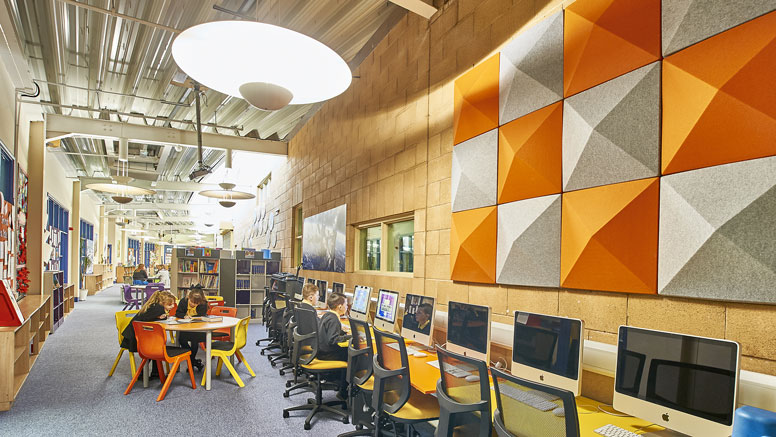Designing an effective school library - art or science?
Alison Tarrant, Chief Executive of the School Library Association, examines the main considerations when planning and designing an effective school library

Halton Lodge Primary School, themed space in the school thoroughfare, designed by FG Library & Learning
There are many things to consider when designing a school library - from the health and safety aspects and learning objectives to atmosphere and art work. The school library has an incredibly difficult job – always trying to balance creativity and knowledge and be the best space it can while keeping one eye on the future for the pupil.
The first things to consider are the end objectives – what are the main activities that will be happening in the space? The environment needs to help you achieve your aims, not make life harder – so if lots of lessons will be happening in there, consider having a ‘classroom’ type space as part of the design. If the main activities will be author visits and story-time you will want the space divided differently.
What do you want the space to feel like? The atmosphere of a room can help or hinder, and this needs to be considered from the beginning, such as lighting, which can make a huge difference and needs to be incorporated into the design at the very beginning of the build. Harsh strip lighting can make reading difficult as it increases the reflections on the page, as well as potentially making life more difficult for some students.
Colour also contributes a huge amount to the overall atmosphere and there are many places that discuss the ‘best’ colours for an educational environment, so I won’t go into them here, but it can have a significant impact on behaviour.
There are many guidelines to do with the health and safety side of things, including shelf height and number of pupils per space, and I would always recommend liaising with your site health and safety manager.
Moving on
School libraries are also responsible for preparing children for the next stage – primary should have one eye on secondary schools, and secondaries should design libraries with one eye on sixth forms. The habits that pupils get into can either assist in their progression, or make transition more of a challenge. Different behaviours and knowledge are called for in different stages of education, and I think at every stage school libraries have a responsibility to prepare children for the next stage – not so much that it overwhelms the current stage, but to allow every child to develop positive and helpful behaviours. While some benefit can be achieved in other ways – through explicit lessons for example – a student who arrives at university already knowing how to use a library catalogue and who has a rough idea of how a library is organised will be ahead of those who haven’t experienced that before. The design of a library can be instrumental in creating positive behaviours and allowing children to reach their full academic potential, and this should be considered carefully when planning a school library.
That being said giving pupils a say in the layout or design can really help increase engagement, and can be a good exercise. Having a focus group to help pick out favourite themes or colours can be really useful, and ensures you get some early users as they are keen to see their ideas come to life.
Achieving the balance between the science and art of designing a school library is not an easy thing to do, but when school libraries are well designed they contain a magic of their own, which is well worth pursuing.
More information on school library design guidelines are available from the School Library Association publication ‘Designs for All Reasons: Creating the Environment for the Primary School Library’ by Michael Dewe and Sally Duncan (2018) or ‘Beyond Beanbags: Designing Inspirational Secondary School Library Spaces' by Geoff Dubber (2016).